MARIANI’S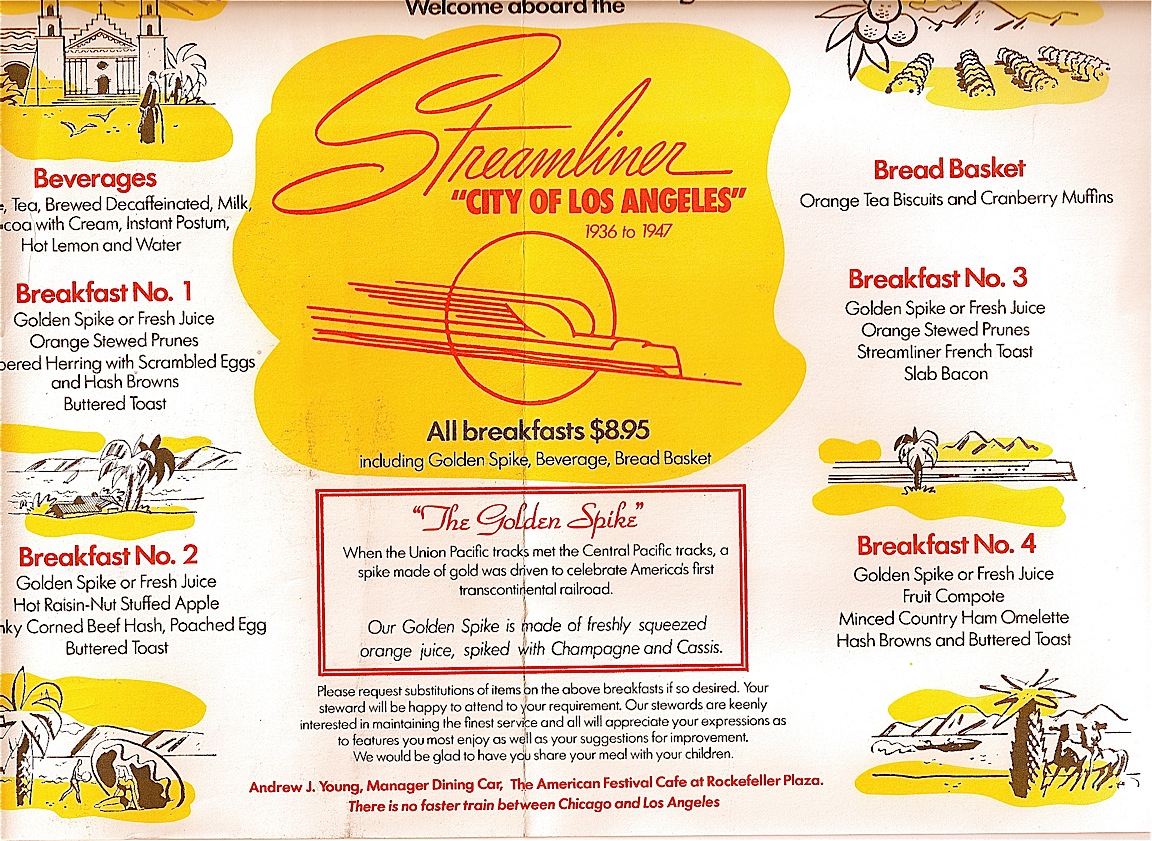
`````````````````````````````````````````````````
➔ QUESTIONS? TO REACH JOHN MARIANI WRITE TO: newsletter@johnmariani.com.
➔ ARCHIVE: Readers may now access an Archive of all past newsletters--each annotated--dating back to July, 2003, by simply clicking on www.johnmariani.com/archive
➔ SUBSCRIBE AND UN-SUBSCRIBE: You may subscribe anyone you wish to this newsletter--free of charge--by clicking here.
GOOD NEWS! Esquire.com now has a new food section called "Eat Like a Man," which will be featuring restaurant articles by John Mariani and others from around the USA.
THIS WEEK: Seven Deadly Sins of a Restaurateur and Eat Pray Love for Men: A Guide to International Eating
~~~~~~~~~~~~~
☛ In This Issue
PALM BEACH POLO AND OTHER DIVERSIONS by John Mariani
NEW YORK CORNER: The Breslin by John Mariani
NOTES FROM THE WINE CELLAR:
Difficult to
Pronounce, Delicious to Drink
by Brian Freedman
Man About Town: Stockholm--What Goes On Under the Midnight Sun by Christopher Mariani
QUICK
BYTES
~~~~~~~~~~~~~
PALM BEACH POLO AND OTHER DIVERSIONS
by John Mariani
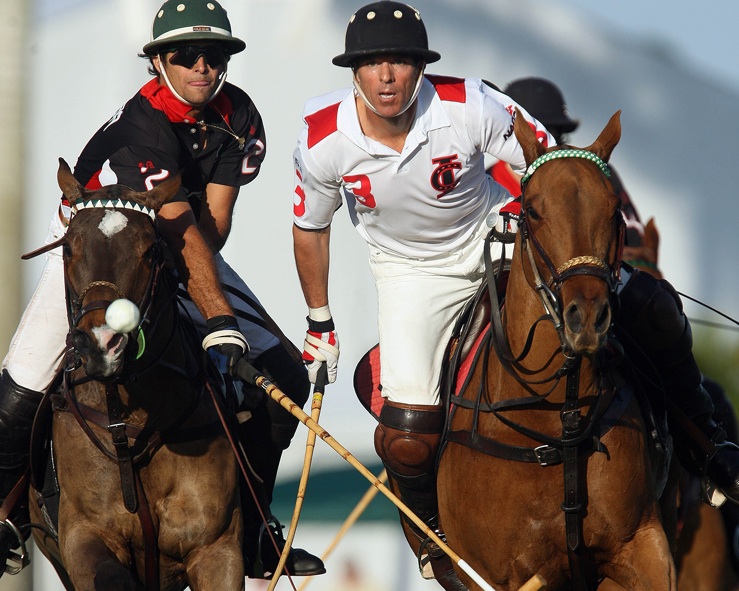
photo
by
LILA
I do not play polo but I've been close enough to it via my
brother who for
many years played in a very rough-and-tumble version of it in New
England where I
learned that with a huge galloping animal beneath you, it is not
a sport to
be taken lightly. Strength is among the first
requirements,
agility, then finesse, all tied into the instincts of a horse with its
own mind
in pursuit of a wooden ball around a field filled with other horses
wondering
why the human beings on their backs are so intent in knocking the thing
down
the field.
At the Palm Beach International Polo
Club (IPC), all
those sporting talents are in evidence plus a
good
dose
of
gentility,
at
least
before and after the Arcalux USPA
106th U.S. Open Polo Championship tournament
I attended. in April. The match attracts the top players and teams
from around
the world including the fellow considered the world’s best, Adolfo
Cambiaso,
along with top-ranked Americans Nicolas Roldan, Jeff Hall, Julio
Arellano, Mike
Azzaro, and others.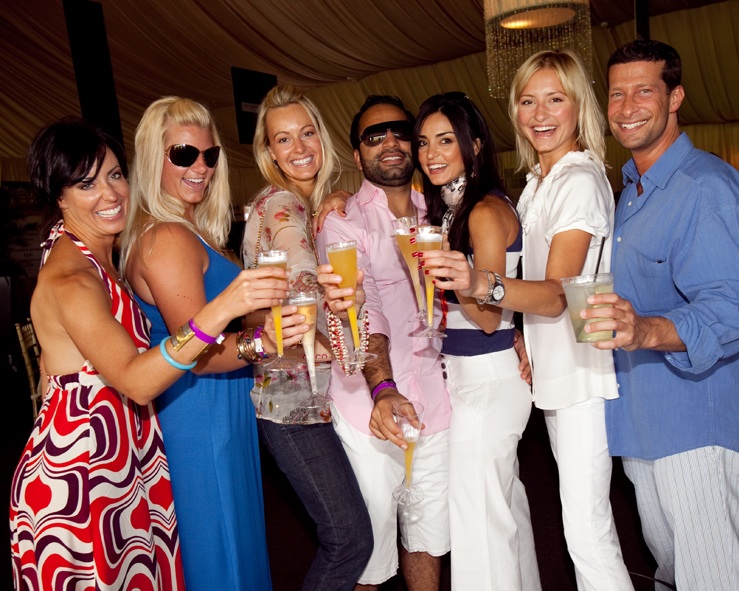
The
IPC
is based in Wellington, Florida, hosting major tournaments and
world-class events
throughout the season, including the Highest Goal Polo played
in the U.S. and such prestigious competitions as the Iglehart Cup, Joe
Barry
Memorial Cup, Ylvisaker Cup, C.V. Whitney Cup, and USPA Piaget Gold
Cup,
culminating with the coveted Arcalux Open played out on eight manicured
polo fields, including the
Piaget Field, flanked by sponsored tents and boxes like the Nespresso
Grande Pavilion, where people gather --some even to watch the game--and
to
attend the lavish brunch put on by NYC's Bistro Bagatelle.
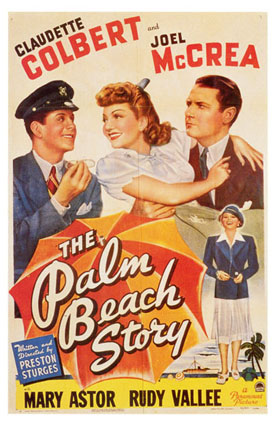 I
was fascinated by the grand frivolity
of it all. The pageantry was somehow very American, and a good
excuse for men and women to dress up in every imaginable form, from
$300 fitted bluejeans to $3000 highheeled shoes. Long dresses,
short dresses, hats galore, men in slacks with little whales
embroidered on them and plenty of Lacoste polo shirts in Crayola
colors. One might
write a long article simply detailing the various shades of tans the
women have developed or sprayed on.
I
was fascinated by the grand frivolity
of it all. The pageantry was somehow very American, and a good
excuse for men and women to dress up in every imaginable form, from
$300 fitted bluejeans to $3000 highheeled shoes. Long dresses,
short dresses, hats galore, men in slacks with little whales
embroidered on them and plenty of Lacoste polo shirts in Crayola
colors. One might
write a long article simply detailing the various shades of tans the
women have developed or sprayed on.
And then there's the very strange tradition of
"divot stomping" at which, at a certain pause in the polo match, people
get out of their seats or from under the tents and hobble across the
field, Champagne glasses in hand--try to imagine doing this in
Jimmy Choo and
Leboutin shoes!--to stomp down the clumps of dirt and grass torn up by
the horses' hooves and riders' mallets. Ann odd exercise but a
tidying up in next to godliness down there.
Palm
Beach,
as
you
might have heard, is a rather affluent
neck of the Florida woods, the setting for the movies "The Palm Beach
Story" and "High Society," a place where mansions are often pink and
the only sound you can hear are the water sprinklers. The kind of place
where, as F. Scott Fitzgerald put it in The Great Gatsby, "people played
polo and were rich together." Taxes and the recession have taken
their toll here as everywhere, but, with the line-up outside the U.S. Open
Polo Championship of Rolls-Royces, 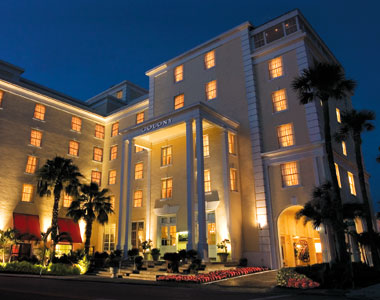 Bentleys, Maseratis, and
top-of-the-line Mercedes, it's hard to say. The season would end,
people would head back north and west, but over that weekend, the
Land
of Oz was in full swing.
Bentleys, Maseratis, and
top-of-the-line Mercedes, it's hard to say. The season would end,
people would head back north and west, but over that weekend, the
Land
of Oz was in full swing.
I
was
happily
staying
at
The
Colony, which since 1947 has been a crucible of Palm Beach social
life, done up in British
Colonial architecture and recently treated to a $12 million facelift,
with all its 90 guest rooms, suites, (right)
villas
and
penthouses
brought
up
to 21st century standards of posh
luxury. The principal restaurant here is the Colony Steakhouse,
as much a draw for its swank bar and "ladies lunches" as for its USDA
Prime
beef. The Palm Court, adjacent
to the pool, is for casual bistro-style dining. Top entertainers
fill the season at the Royal Room cabaret.
In Palm Beach itself the dining options are highly
diverse, exponentially if you include West Palm Beach and surrounding
communities like Delray and Boca Raton. Here are some good choices I
had a chance to visit this spring.
L'Escalier
The Breakers
Palm Beach, Florida
1-888-BREAKERS
www.thebreakers.com
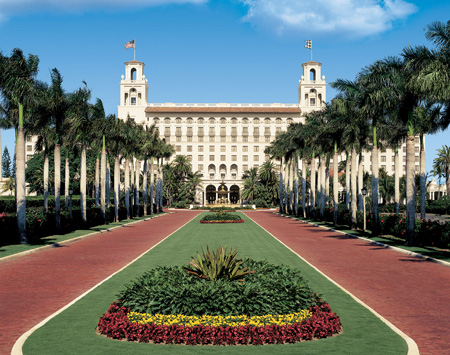 A
complete refurbishment of The Breakers has also been ongoing, and a
number of new dining options have joined the older favorites here.
A
complete refurbishment of The Breakers has also been ongoing, and a
number of new dining options have joined the older favorites here.As a matter of fact, that's what I told Mr. Gomez and Chef de Cuisine Greg Vassos--serve me whatever they wished. What followed was testament to the refinement of luxury dining, a not inexpensive enterprise these days but one that reminds a true gourmet just how exquisite the fine dining experience can be. No intrusive music, no other tables knocking into yours, no sloppily dressed waitstaff, no urgency to get you in and out fast. The table, which is to say L'Escalier itself, is yours for the evening--still the norm in France but an amenity fast retreating in the U.S.
I sat down to the beautifully set table and began with the "Chef's Garden Landscape" of potato risotto, porcini made to look like "soil," various powders and baby vegetables, this with a glass of Chilean carmenère from Errazuriz 's "Don Maximiano Estate." I have read that Vassos is considered a molecular cuisinier--not high praise in my mind--but aside from a few foamy sauces and some playfulness on the plates, I didn't see any of that unnecessary manipulation of ingredients concocted by chefs under that mantle. Instead there were lovely presentations of a peekytoe crab salad with black radish, avocado, a fizzy grapefruit supreme, melon terrine, and coriander vinaigrette. The "Foiewhopper" was wagyu beef and foie gras with lobster, confit of portobellos, candied orange on a brioche bun with classic sauce périgueux. Vassos did throw some harmless corn chowder foam onto a crisp scallop with a périgourdine sauce, but most everything was sensible and very tasteful.
Dover sole with a textbook beurre monté and beluga lentils, baby leeks, apple gelatin, caper puree and mustard beurre blanc was way overdressed, compromising the fine flavor of the sole. I did love the crab and mascarpone agnolotti with corn, favas, pumpkin gnocchi and a white truffle foam in corn broth, which was marvelously flavorful and sumptuous enough for a main course. Veal came with more crab, Yukon potatoes, asparagus, a "deconstructed" Béarnaise, and sherry veal jus, accompanied by a Kurtz Family Vineyards Boundary Row Shiraz 2006 from Australia's Barossa Valley.
As is always so welcome at a restaurant of this caliber, there is a selection of cheeses and marvels of desserts too many to mention.
L'Escalier make have the look of a dining salon of another time but this is no museum piece: It is exemplary of how a chef with innovative ideas and a solid classical background can match the grandeur of such a room and the finesse of its staff in a manner that is as up to date as any restaurant of the decade. You get what you pay for.
L'Escalier is open for dinner Tues.-Sat.; À la carte appetizers run $$15-$43, entrees $35-$53; petit tasting menu $95 (with wines, $55 more), and grand tasting $145 ($90 more with wines).
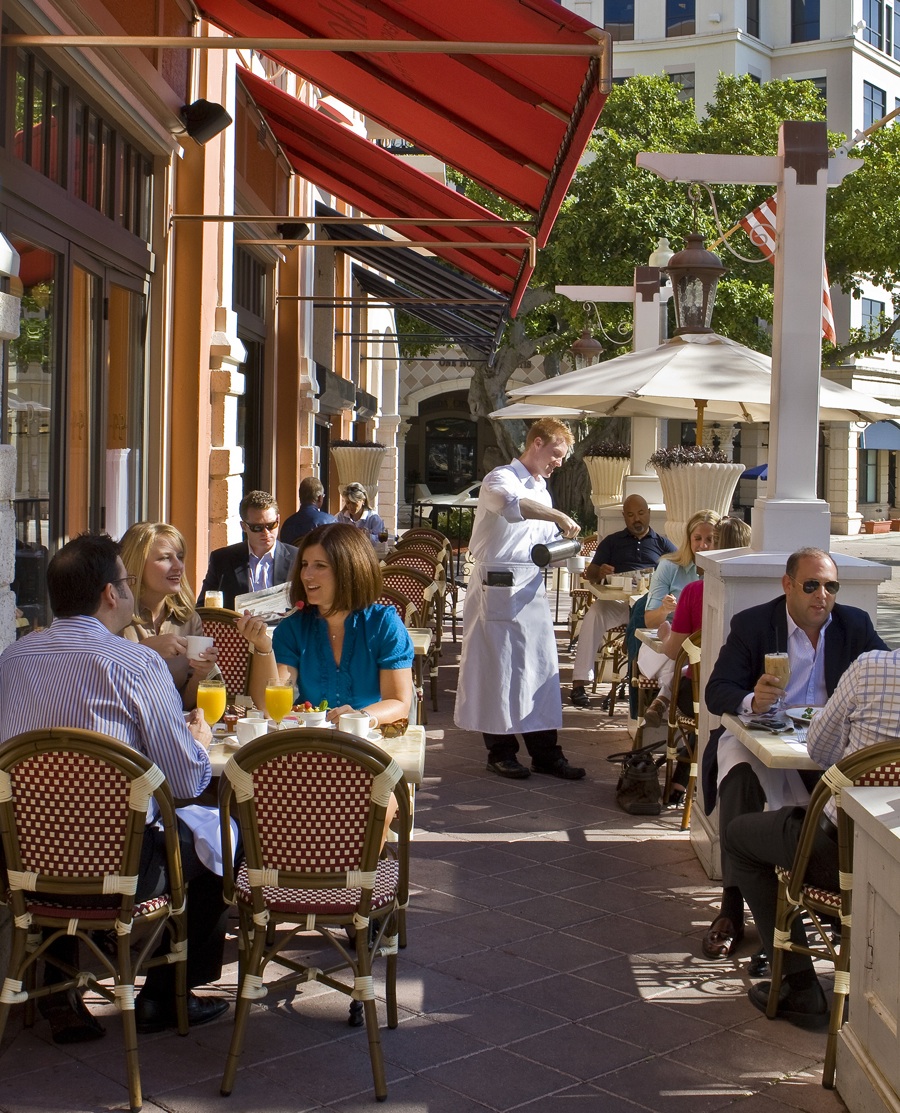 PISTACHE
PISTACHE
101 N. Clematis Stree
West Palm Beach
561-833-5090
www.pistachewpb.com
Right
off
the
bat,
you'll
think
of St. Tropéz, and right off the first sip
of
rosé wine and the first morsel of Chef Julien
Grémaud's terrine of foie gras, you'll swear Pistache is as true
to
form as any bistro in South Florida. Managing partner
Thierry Beaudraiseda, from Bordeaux, seems to know everyone and aims to
please newcomers
and regulars alike with a bonhomie that is as much a part of the draw
here as the wonderfully evocative bistro décor and outdoor
patio, with
its red awnings and rattan chairs. Inside it is as cozy as it is
amiable, casual in a genteel way, genrous in its hospitality.
All the bistro classics are here, including a fine
array of charcuterie like the hard sausage of Lyon called rosette and
the well-fatted saucisson
with garlic. The cooking is solid, honest, from a
true hanger steak with excellent hand-cut frites to juicy coq au
vin and a lovely dish of seared scallops in a lobster sauce
with
fragrant basmati rice. An American special of softshell
crabs was overcooked the night I visited.
I love the well-selected winelist, with high-priced
"Cellar Selections" alongside very reasonable tariffed vins de pays and
two dozen wines by the glass.
Bistro desserts are among my favorites, and the best here
are the light, vanilla-rich floating island and the bread pudding
Bréton with rum and raisins in a rich custard sauce.
You'll come for lunch but you'll linger after dinner.
Dinner starters
run $11.50-$19.75 and main courses $13-$27.50. Pistache is open
daily for lunch and dinner, with brunch Sunday.
DOLCE
DE
PALMA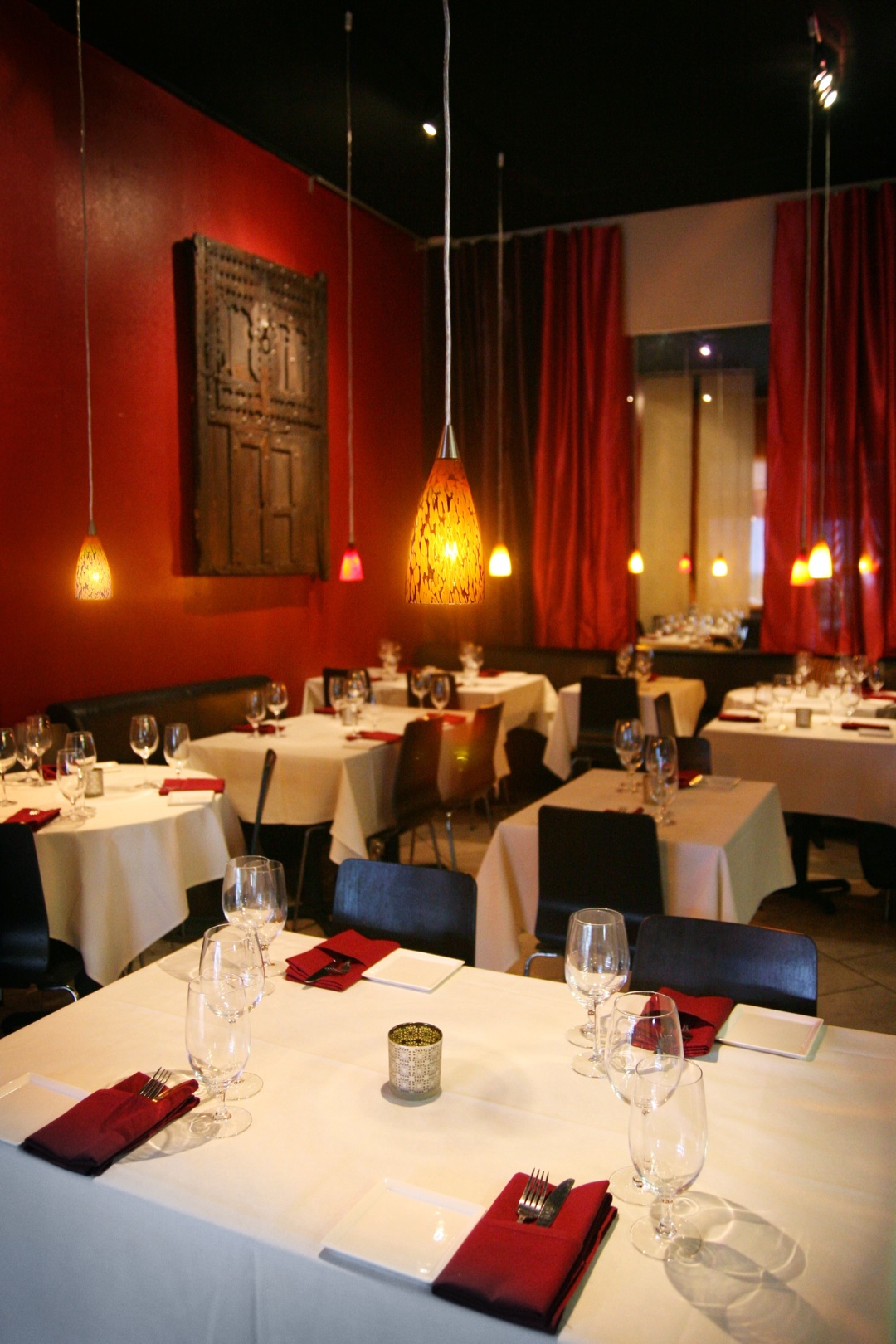
1000 Okeechobee Road
West Palm Beach
561-833-6460
www.dolcedepalma.com
Head
over
to
West
Palm
Beach,
maybe ask directions, and you'll get to Dolce
de Palma, a highly personalized restaurant run by the ebullient big guy
Chef Anthony de Palma, whose simple objective is to feed you and make
you feel happy. It's difficult not to in this cheery,
red-walled place with the tiny open kitchen up front and a patio
outside. He also runs a gelateria, so don't overeat before dessert.
 You can go light and just have a well-made panini crammed with good Italian
ingredients, or wraps, but those don't
really showcase de Palma's talent for Italian and Mediterranean food,
which becomes evident in his grilled margherita-style flatbread with
fresh mozzarella, a good way for a table to start off while deciding
among delicious dishes like his porcini
bolognese-sauced rigatoni pasta
with wild boar meat and tomato, or his fusilli abundant with tender
shrimp, white beans, garlic and a dash of clam juice. His gnocchi are
light but perfect in dumpling size, sauced with marinara and fresh
mozzarella.
You can go light and just have a well-made panini crammed with good Italian
ingredients, or wraps, but those don't
really showcase de Palma's talent for Italian and Mediterranean food,
which becomes evident in his grilled margherita-style flatbread with
fresh mozzarella, a good way for a table to start off while deciding
among delicious dishes like his porcini
bolognese-sauced rigatoni pasta
with wild boar meat and tomato, or his fusilli abundant with tender
shrimp, white beans, garlic and a dash of clam juice. His gnocchi are
light but perfect in dumpling size, sauced with marinara and fresh
mozzarella.
For meat I'd go with the roasted seven-spice
chicken--a very good bird indeed--with baby bok choi and coconut curry
sauce, which veers from the Mediterranean template but does so with
panache. Grilled pork tenderloin was more American, fat, juicy,
with roasted sweet potato and a lush burnt lemon syrup.
As noted, save room for gelato (above). It's first rate.
Dolce de
Palm is open for breakfast and lunch Wed. and for dinner Wed.-Sat.
Appetizers run $4.50-$18, main courses $14-$34.
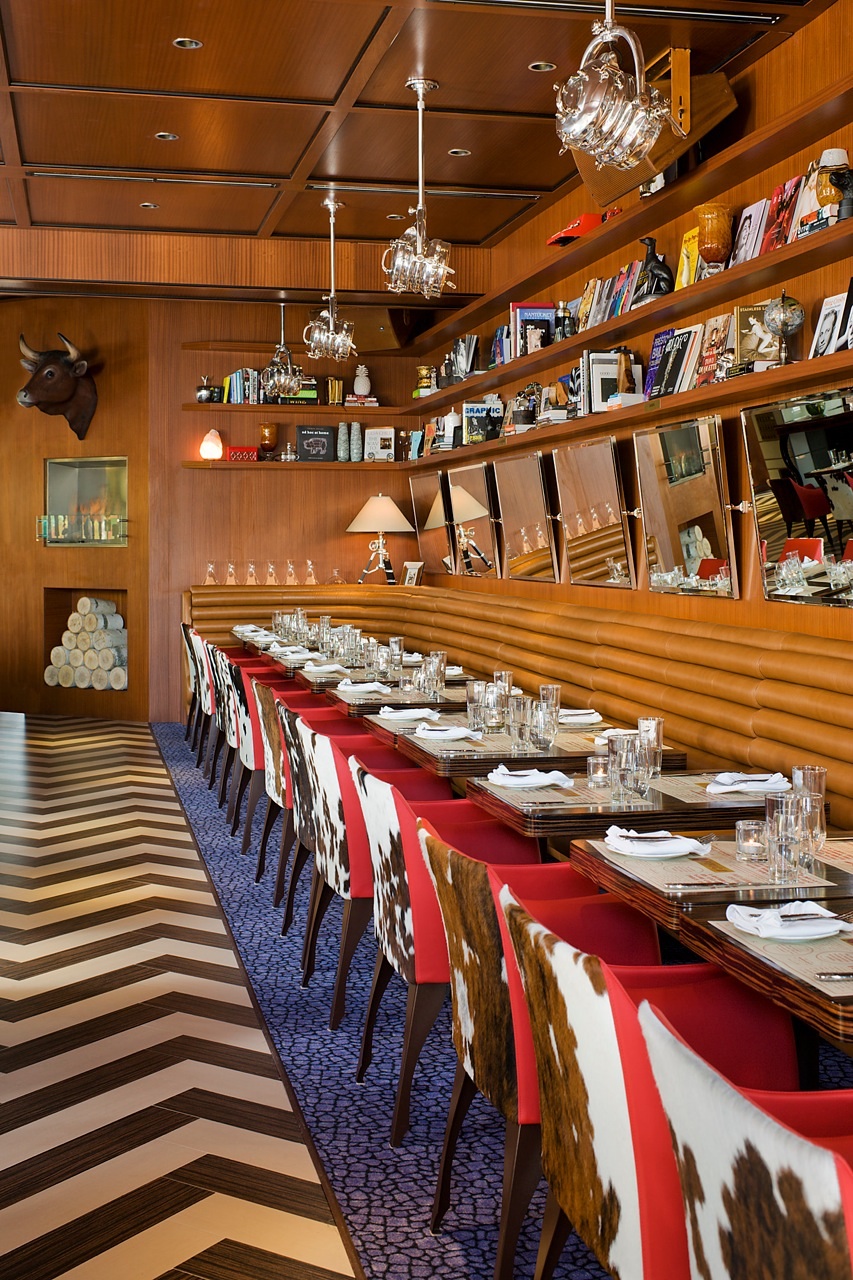 THE
OFFICE
THE
OFFICE
201
East
Atlantic
Avenue
Delray
Beach,
Florida
561-276-3600
Whaddaya
wanna
eat?
You
want
red
chile
tacos. Got ‘em. Cheeseburger? Done.
Beer-battered
fish. Here you go. Whatever you
feel like eating and drinking, The Office’s menu probably has it on
there
somewhere. But it’s also got Maine
sea scallops wrapped in Serrano ham with Spanish rice and a romesco
sauce,
along with “Pork and Beans” made with a slab of Niman Ranch pork belly,
barbecued butter beans, and crispy leeks; and braised short ribs with
potato
puree and a sinus-clearing horseradish sauce. To
wash it all down there are 45 boutique beers on tap and 200 wines.
The Office,
with its outdoor tables and bar and an interior that evokes a Kennedy
Era décor
of polished Brazilian walnut shelves loaded with art and design books,
an
ethanol fireplace, a vintage Underwood typewriter, and
leopard-patterned
carpets, is trying wincingly hard to be very hip but somehow it’s
succeeding on
Delray Beach’s main drag. Women
with sparkly tans way too early for springtime and guys in Ralph Lauren
golf
shirts and salmon-colored shorts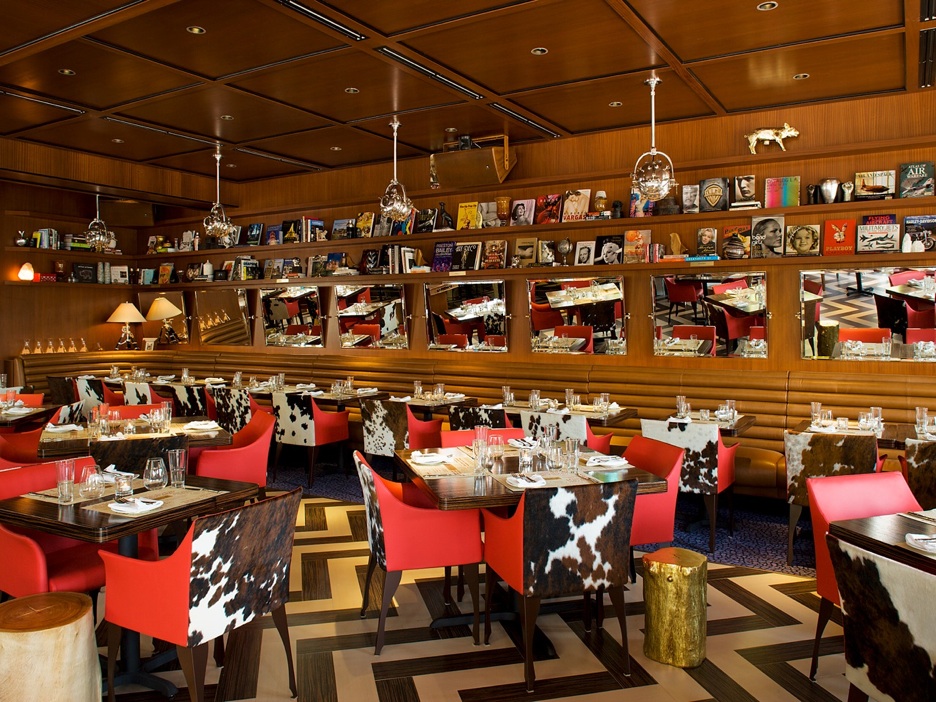 pack the room or hang over the bar, while
hard
rock blasts from the speakers. Expensive
tight
tank
tops,
t-shirts,
ripped
jeans,
and
gold
mules
rule. Margaritas vie with magnums
of Veuve Clicquot, and you’ve got to try the two Florida beers on the
list—Monk
in the Trunk and Holy Mackerel.
pack the room or hang over the bar, while
hard
rock blasts from the speakers. Expensive
tight
tank
tops,
t-shirts,
ripped
jeans,
and
gold
mules
rule. Margaritas vie with magnums
of Veuve Clicquot, and you’ve got to try the two Florida beers on the
list—Monk
in the Trunk and Holy Mackerel.
What
distinguishes The Office from the other out-of-the-box eateries along
the strip
is the cooking of chefs Larry La Valley and Francy Deskin’s commitment
to
taking the basics of American prole food and giving them just enough
twist to
put them on a par with the best contemporary kitchens turn out, whether
it’s
fried green tomatoes and a green onion aïoli or
cheddar-and-jalapeño-laced corn
bread with maple pecan butter and pimiento cheese.
You just
know that restaurateur David Manero has more units of The Office on his
mind,
but for now, this is the place you want to hit in Palm Beach County for
a good
time and a good meal at a good price.
Appetizers run $9-$18,
main courses $12-$28.
``````````````````````````````````````````````````````
NEW YORK CORNER
The BRESLIN
16 West 29th Street (near Broadway)
212-679-1939
www.the breslin.com
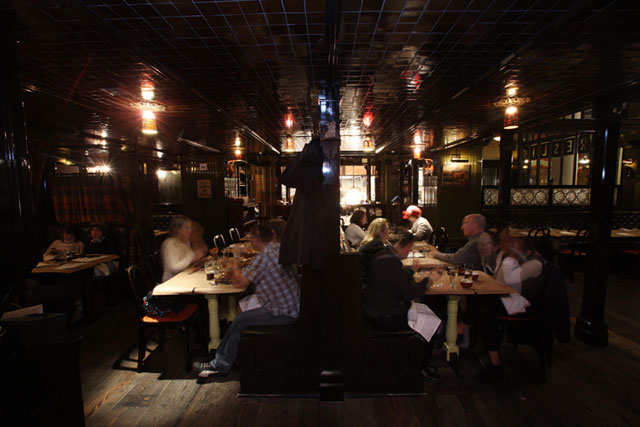 Chef
April
Bloomfield
and
partner
Ken
Friedman have been among New York foodies
favorite downtown innovators ever since opening the minuscule
Spotted Pig, where just to get in was a triumph of some doing. A
seafood restaurant didn't work out quite so well last year, but The
Breslin is booming, for breakfast, lunch and dinner. Located near
the Flatiron Building, The Breslin, in the Ace Hotel has a familiar
look, since that look can be traced to any number of antique bars and
pubs in New York opened at any time since 1890. It has the requisite
dark wood and
leather, the rough floorboards, tin ceiling, a
Schlitz Malt Liquor sign, and lots of
animal motifs, not least the pig, which figures large on the menu here.
The cocktails have names from music albums, like Coldplay's "Rush of
Blood to the Head," and the place is very very loud, even during the
day.
Chef
April
Bloomfield
and
partner
Ken
Friedman have been among New York foodies
favorite downtown innovators ever since opening the minuscule
Spotted Pig, where just to get in was a triumph of some doing. A
seafood restaurant didn't work out quite so well last year, but The
Breslin is booming, for breakfast, lunch and dinner. Located near
the Flatiron Building, The Breslin, in the Ace Hotel has a familiar
look, since that look can be traced to any number of antique bars and
pubs in New York opened at any time since 1890. It has the requisite
dark wood and
leather, the rough floorboards, tin ceiling, a
Schlitz Malt Liquor sign, and lots of
animal motifs, not least the pig, which figures large on the menu here.
The cocktails have names from music albums, like Coldplay's "Rush of
Blood to the Head," and the place is very very loud, even during the
day.
But the service staff couldn't be nicer
and the host and hostess don't have to put up with people who insist they had a reservation
because The Breslin doesn't take
them,
which can be very off-putting to a lot of people, including myself, who
don't think hanging out at the bar drinking expensive cocktails named
after rock songs is a
fun way to while away the hour or more till I sit down to dinner. I
went at lunch instead. 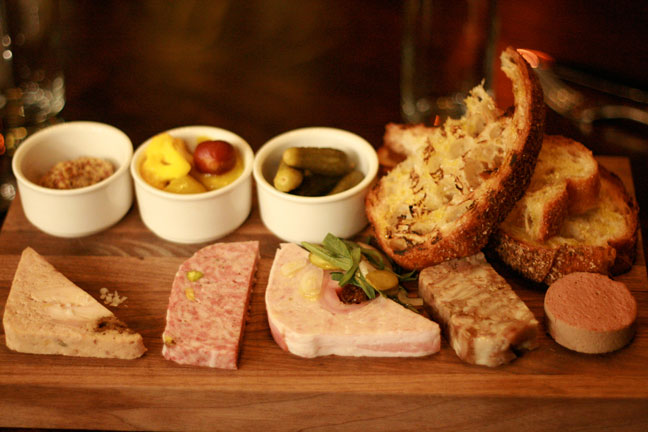
That
said,
you'll
eat
well
at
The Breslin if
you like to eat hearty, along the lines of a bear just out of
hibernation. Somewhere
on the menu there are boiled peanuts and caramel popcorn and a salad,
and some cheese alternatives, but this is a place devoted to
inveterate, unapologetic carnivores
who see nothing wrong with following some delicious chicken liver
parfait with Madeira jelly with a platter of crispy cotechino sausage
with baked beans, a big fried egg on top and parsley salad. There
is also a
good seafood sausage with rich beurre
blanc, and if you haven't had
good old British bubble and squeak for a while, here's the place to
get it.
The lamb burger has caught on big time in an age
when the food dudes
seem to believe they actually discovered burgers and dissect its
virtues and vices as if they were speaking of canard à la presse.
There are, of course, suckling pig items galore. Expect to ask
for a doggie bag.
I somehow managed to
put away half a slice of nice tangy buttermilk pie, which started
me
to humming Hoagy Carmichael's great song, "Ole Buttermilk Sky" much to
the
chagrin of my guest.
It all tasted blindingly good on a sunny
New York midday, though when I got home for dinner, I really had to
fake it. A day later, I was a little hungry again.
Open weekdays for
breakfast, lunch, and dinner; weekends for brunch and dinner. Dinner
entrées $17-$36.
``````````````````````````````````````````````````````````````````````````
NOTES FROM THE WINE CELLAR
Difficult to Pronounce,
Delicious to Drink
by Brian Freedman
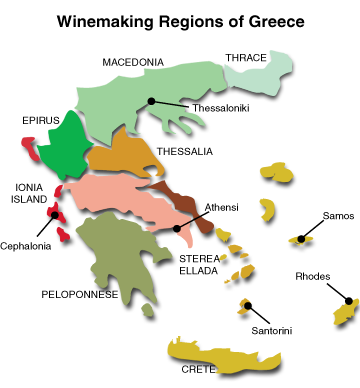 For
a long time now, grape oracles have been predicting the rise of Greek
wines on
the American market. The main stumbling blocks, they tend to say, are
the
public’s lack of familiarity with the country’s wines and regions in
general,
and with the names of the varietals in particular.
For
a long time now, grape oracles have been predicting the rise of Greek
wines on
the American market. The main stumbling blocks, they tend to say, are
the
public’s lack of familiarity with the country’s wines and regions in
general,
and with the names of the varietals in particular.
While the pronunciations can be difficult (Malagousia
and Agiorghitiko, for example, certainly aren’t the most
consumer-friendly
grape names in the world), and while the divisions of the country’s
wine-growing regions remain a mystery to most consumers on this side of
the
Atlantic, we seem to have access to more excellent Greek wines than
ever before
that are built to charm and change perceptions.
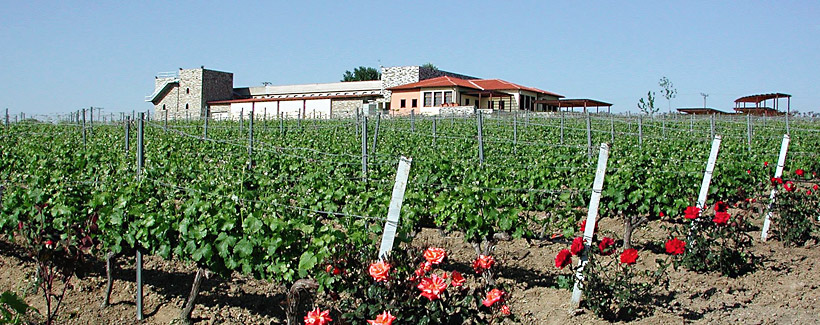
One of the most surprising aspects of the wines was their freshness, pronounced acidity, nd balance. Most consumers, after all, tend to assume that the wines of Greece will reflect the stereotypically hot climate of the country, and as a result find their footing on riper, more alcoholic ground. The best wines, however, were thoroughly balanced, expressed their terroir very clearly without the often obscuring overlay of super-ripe fruit and alcohol, and didn’t seem to be aiming for an overtly international style. The wines of Domaine Gerovassiliou come from the 56 hectare estate vineyard in Epanomi, 25 kilometers southwest of Thessaloniki. The Mediterranean climate of Epanomi means that native varieties like Assyrtiko, Malagousia, Limnio, Mavroudi, and Mavrotragano do quite well there, as do the more familiar Chardonnay, Viognier, Sauvignon Blanc, Syrah, Grenache, and Merlot.
Happily,
even
the
international
varieties
maintain
the
Greek
identity
of
their
terroir,
and
show
the
minerality and acid balance that seem to be the hallmarks
of these
wines. I particularly enjoyed the Domaine Gerovassiliou Malagousia
2008, with
its intriguing notes of chalk and persimmon, all of it carried on a
delicately waxy texture that provided substance without overwhelming
weight.
The Domaine’s Viognier 2008, too, was an unabashed winner, its highly
spiced
character rich with everything from charred peach and smoke to ginger
and nuts.
Biblia
Chora, on the other hand, is in a cooler climate, 350 meters above sea
level on
the slopes of Northern Greece’s Mt. Pangeon. Here, Mr. Gerovassiliou
and his
oenologist partner, Vassilis Tsaktsarlis, produce wines of purity and
brightness. Assyrtiko and Agiorghitiko are the Greek stars here, as
well as
Chardonnay, Semillon, Sauvignon Blanc, Merlot, Cabernet Sauvignon, and
Syrah.
These wines, too, despite the cooler climes they’re born in, exhibit
power
alongside their transparency and expressivity.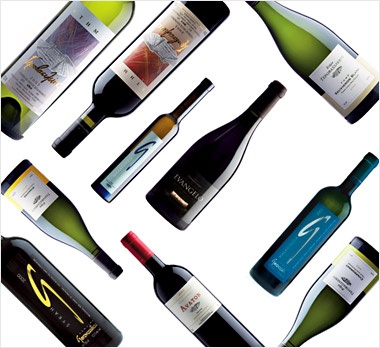
The
2008 Ovilos, a blend of 50% Assyrtiko and 50% Semillon, is a perfect,
food-friendly example of how remarkably well indigenous and
international
varietals work together in Greece. It starts off with a nose of warm
vanilla-peach custard and walnuts, and then, on the palate, turns in
the
direction of cooked pastry shell, poached pear, almond skin, and lemon
oil.
There’s real weight to this wine, real presence on the tongue, but its
spine of
minerality and pitch-perfect acid balance keep it from crossing over
into the
realm of the heavy. The gold medal it was awarded in Decanter magazine last
year was more than well-deserved: It was wholly necessary.
Biblia
Chora does just as well with 100% international-varietal bottlings as
it does
with purely native ones. The 2005 Merlot, for example, is lush,
expansive, and
fully expressive of its fruit, but also shows plenty of warm clay notes
and a
posture-providing sense of minerality.
The
Chardonnay 2009 from Katsaros was also a complex stunner, and pulled
off the
very difficult trick of staying fresh and mouthwatering while
displaying a
texture on the chewier end of things. Slate and chalk were balanced out
against
apricot, lemon, and lime, all of it tied together by a creaminess that
was
irresistible.
These,
then, are the wines that promise to introduce Americans to the ample
current
achievements and future possibilities of Greece. Wine has been made for
thousands of years there. It’s about time we finally gave it the
serious
consideration it so richly deserves.
Brian Freedman is
a food, wine, and travel writer, wine consultant, and speaker. He
writes the blog UncorkLife.com for Wine Chateau, is restaurant
critic for Philadelphia Weekly, South Jersey Magazine, and Suburban
Life Magazine, wine columnist for Affluent Magazine, and contributes to
a number of other publications, including Philadelphia Style Magazine.

MAN ABOUT TOWN
by Christopher Mariani
Stockholm--What Goes On Under the Midnight Sun
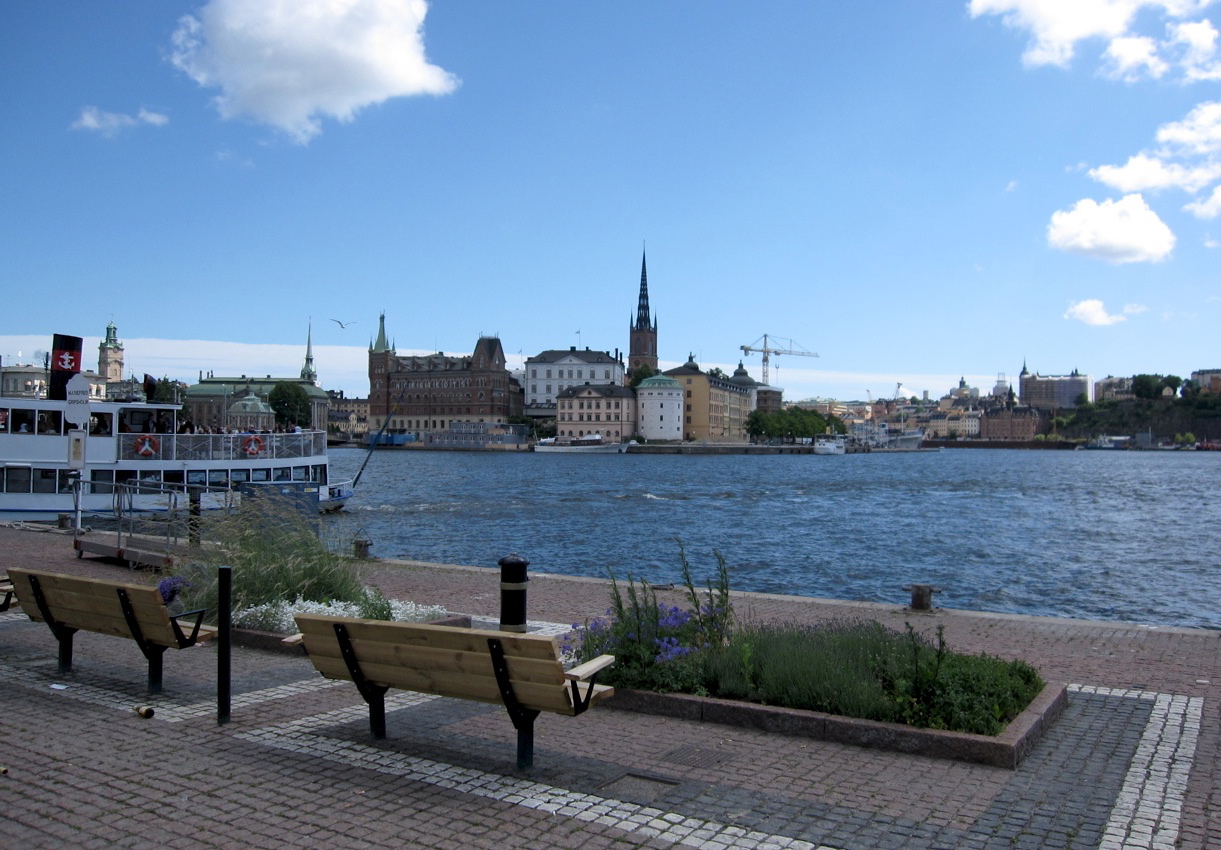
Oh yeah, and the vodka! How could I forget the vodka! Staying true to our Russian heritage, it is only right that during the celebration we drink Russian vodka, which my mother usually flavors with lemon or orange rinds and softens with a touch of glycerin. Tradition requires toasts throughout the meal accompanied by the consumption of a jigger as we all say “na zdarove”--to your health! By the end of the night, or should I say the morning, the few who have not made their way to the couch sit back at the table with a vodka-induced smile and a belly full of food.
It is always tough to break tradition but after a recent trip to Stockholm ,where I tried Sweden’s Kanon Organic Vodka, I might have to introduce the family to a great non-Russian spirit.
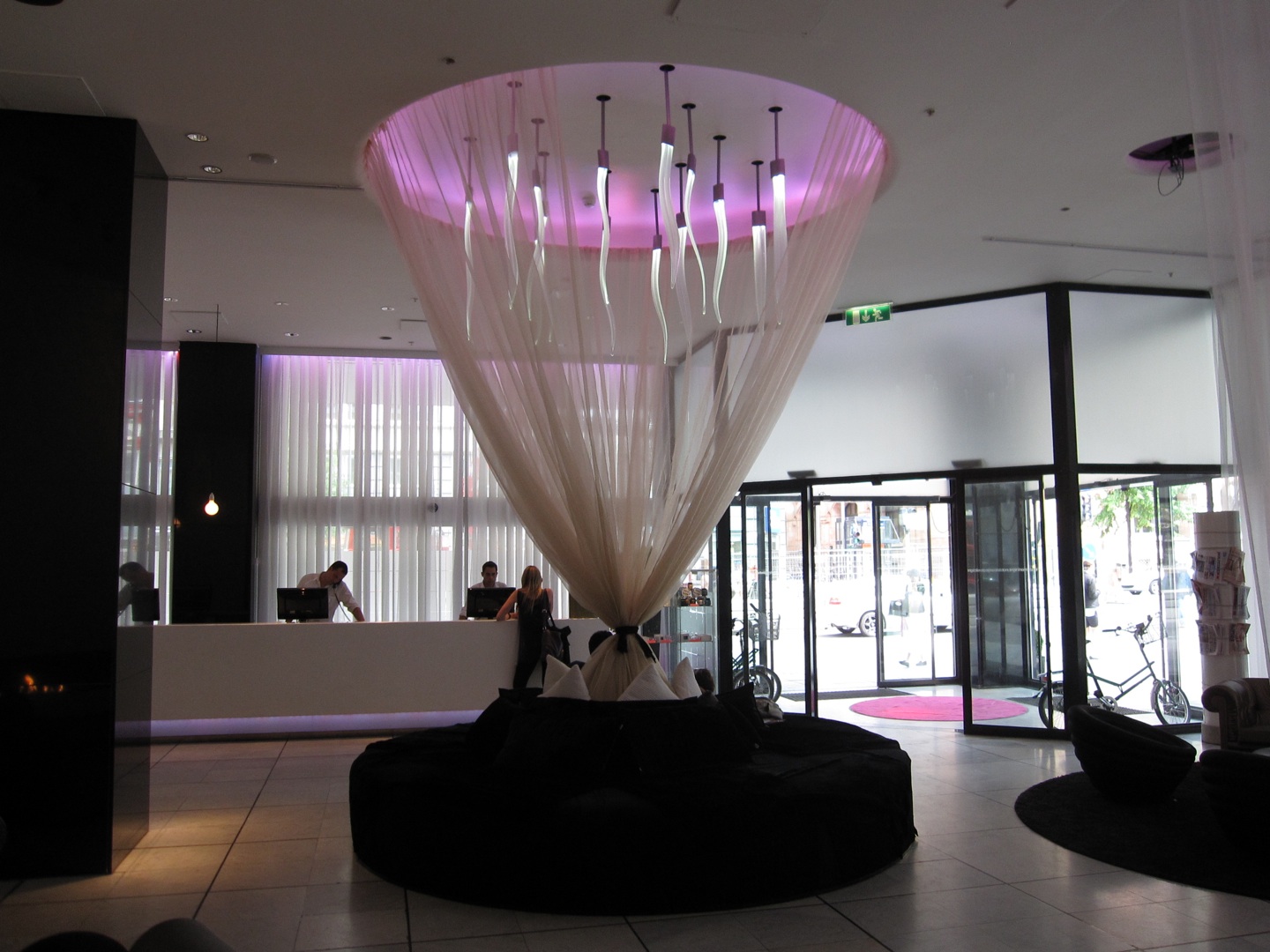 I
arrived
in
Sweden
and
took a
20-minute Arlanda
Express train (much more convenient
and economical than a taxi) directly into the city of Stockholm, where
I walked half a block to the
Nordic Light Hotel (left),
a trendy spot with a
vibrant lobby,
beautiful rooms, and a lively bar and lounge.
Once settled in, I ventured
into Stockholm and walked along the city’s beautiful waterways, over
the
charming bridges connecting the islands that make up the metropolis,
and
stared
in amazement at the remarkably untouched architecture found around
every corner. The city’s buildings are
full of
living history and culture because Stockholm was one of the few cities
spared the
destructive bombing of WWII. The
buildings are all of similar design and proportioned in size, not many
over
seven stories tall.
I
arrived
in
Sweden
and
took a
20-minute Arlanda
Express train (much more convenient
and economical than a taxi) directly into the city of Stockholm, where
I walked half a block to the
Nordic Light Hotel (left),
a trendy spot with a
vibrant lobby,
beautiful rooms, and a lively bar and lounge.
Once settled in, I ventured
into Stockholm and walked along the city’s beautiful waterways, over
the
charming bridges connecting the islands that make up the metropolis,
and
stared
in amazement at the remarkably untouched architecture found around
every corner. The city’s buildings are
full of
living history and culture because Stockholm was one of the few cities
spared the
destructive bombing of WWII. The
buildings are all of similar design and proportioned in size, not many
over
seven stories tall.As I passed through one of Stockholm’s busy pedestrian-only streets in the city’s section called Old Town, I was hit with the tantalizing aroma of ice cream waffle cones being pressed at the Café Jäärntorget (below). There a young Swedish girl sat in front of the waffle iron and slowly poured the mix and closed the lid as the buttery, sweet scent filled the street.
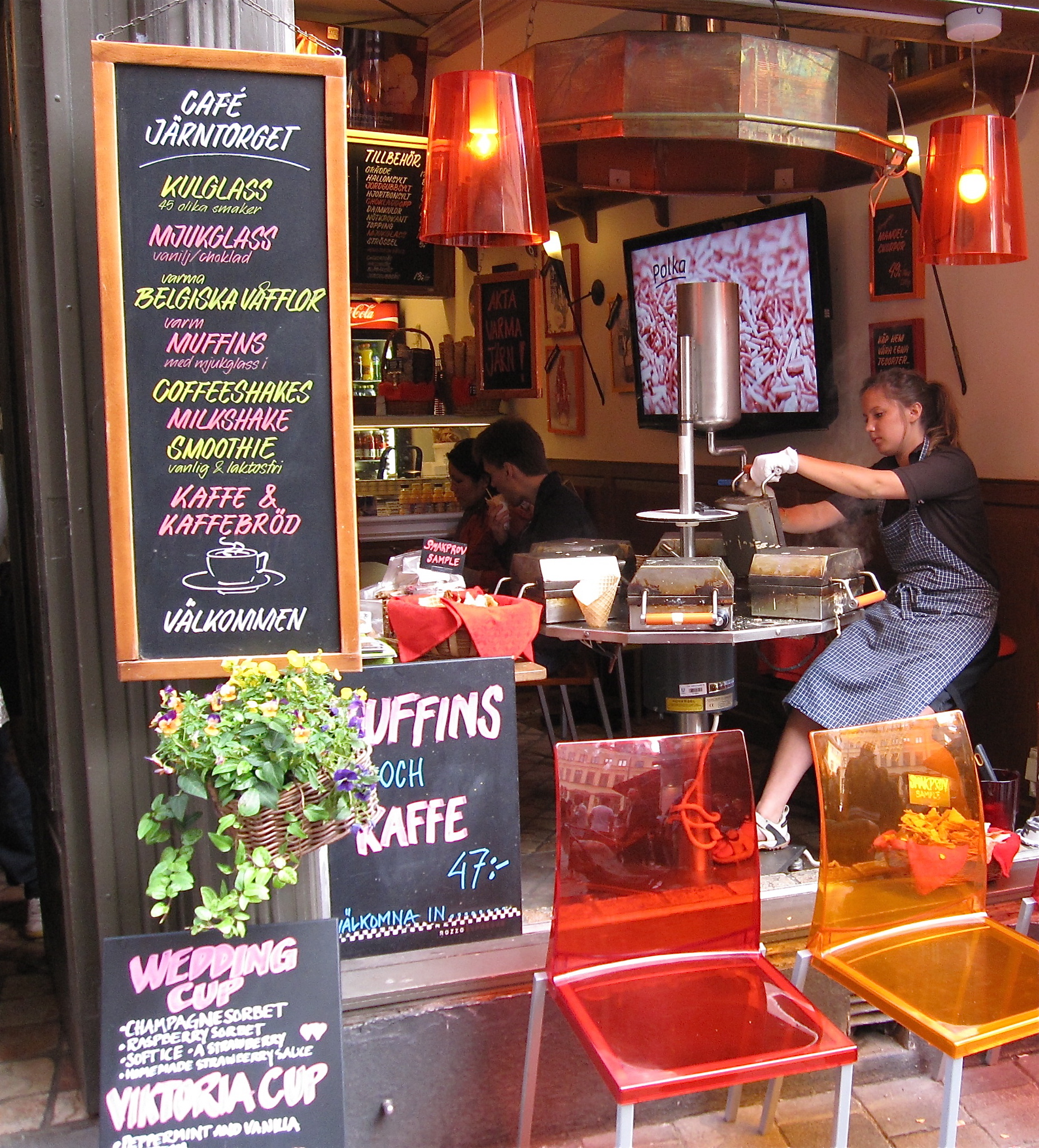 Before
trying
the
café’s
wonderful
ice
cream and cone, I walked directly across the street to a
small eatery with outside seating called Restaurang
JT (below), where I tasted
the chef’s traditional Swedish meatballs, köttbullar
med gräddsås, a bit overcooked and dry, but full of
flavor thanks
to the
cream sauce and side of lingonberries. Prior
to
having
the
meatballs,
I
ordered
the
källarmästartoast, a
very common Swedish appetizer,
consisting of tender fillet of beef, topped with crispy thick bacon and
Béarnaise sauce served over two pieces of white toast. I also ordered prawns mixed
with dill mayonnaise, a staple in Swedish cuisine, that was very
appetizing. The chef insisted on
my trying the reindeer roast with morel mushroom sauce that had a great
gamy
Before
trying
the
café’s
wonderful
ice
cream and cone, I walked directly across the street to a
small eatery with outside seating called Restaurang
JT (below), where I tasted
the chef’s traditional Swedish meatballs, köttbullar
med gräddsås, a bit overcooked and dry, but full of
flavor thanks
to the
cream sauce and side of lingonberries. Prior
to
having
the
meatballs,
I
ordered
the
källarmästartoast, a
very common Swedish appetizer,
consisting of tender fillet of beef, topped with crispy thick bacon and
Béarnaise sauce served over two pieces of white toast. I also ordered prawns mixed
with dill mayonnaise, a staple in Swedish cuisine, that was very
appetizing. The chef insisted on
my trying the reindeer roast with morel mushroom sauce that had a great
gamy 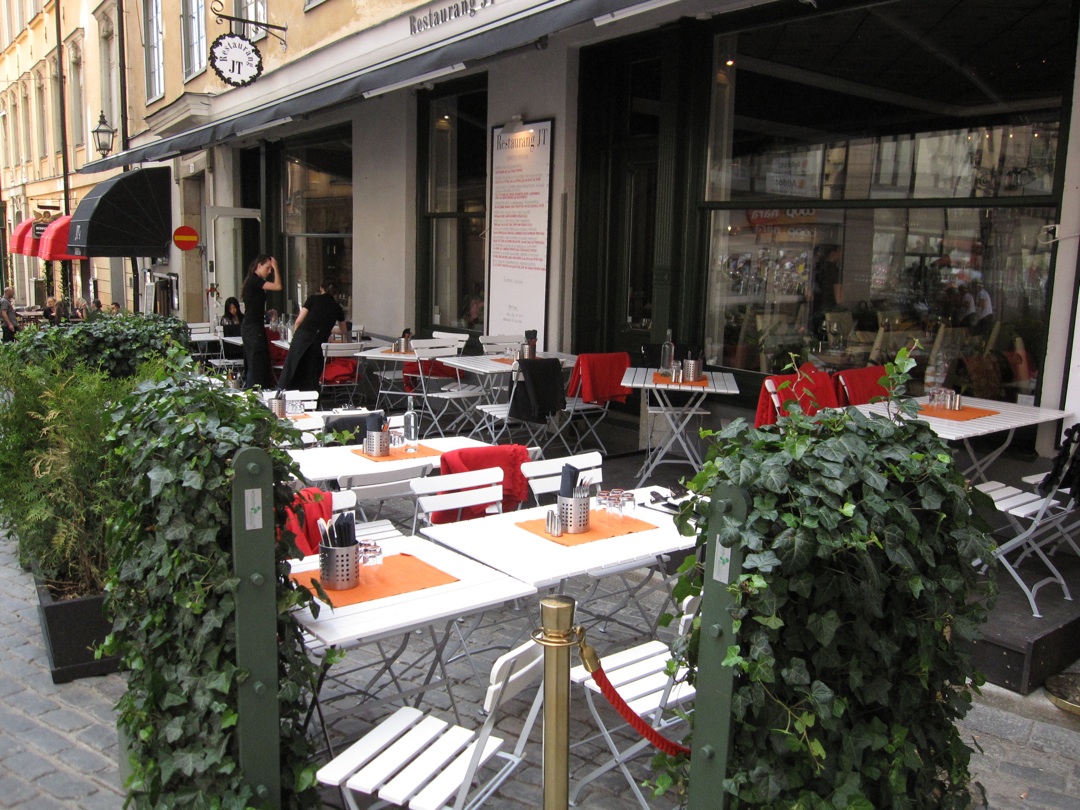 flavor
and surprisingly tender for meat with so little
fat. During my meal I
tried one of Sweden’s local beers called
Nils Oscar God Lager (5.3% alcohol)
that had a great full body flavor and medium amber color.
flavor
and surprisingly tender for meat with so little
fat. During my meal I
tried one of Sweden’s local beers called
Nils Oscar God Lager (5.3% alcohol)
that had a great full body flavor and medium amber color.That evening, I met the founder of Sweden’s Kanon Organic Vodka, Peter Hjelm, a charming gentleman who was nice enough to take me on a tour of Stockholm by way of water on his personal boat. As we passed the beautiful islands that make up Sweden’s archipelago, I sensed the romance in the air caused by the royal wedding of Swedish Crown Princess Victoria and Daniel Westlingust just one day prior at the Storkykan cathedral, as I saw couples kissing in far-off seaside gazebos. Peter and I slowly cruised along as I had my first taste of the Kanon Organic Vodka poured from a lovely light blue wooden casing. The vodka was smooth with a very gentle finish, uncharacteristic of most moderately priced vodkas.
Peter also introduced me to a very traditional sailor’s cocktail known as café kask, made with a mixture of Swedish coffee and vodka. The interesting part of the café kask is how the drink is proportioned. A "real man," as Peter put it, will place a Swedish coin, a krona, at the bottom of a mug and slowly pour dark coffee until the coin cannot be seen, then vodka is added to lighten the drink until the coin reappears; the final step is to top off the drink with
 more
coffee
until
the
coin
again disappears. The
drink packs a shot of caffeine with
a hefty amount of vodka, immediately reminding me of the Italian
espresso
and
Sambuca drink, without the sweet licorice flavor of course. As I went to make two more cocktails,
Peter said, “no, thank you” as he was reluctantly abiding by the new
BWI
drinking
law that forbids boat operators in Sweden to drive under the influence
after
consuming more than one alcoholic beverage.
more
coffee
until
the
coin
again disappears. The
drink packs a shot of caffeine with
a hefty amount of vodka, immediately reminding me of the Italian
espresso
and
Sambuca drink, without the sweet licorice flavor of course. As I went to make two more cocktails,
Peter said, “no, thank you” as he was reluctantly abiding by the new
BWI
drinking
law that forbids boat operators in Sweden to drive under the influence
after
consuming more than one alcoholic beverage.As we continued to sail, the islands we passed were covered with beautiful green grass, tall spruce, elm and birch trees, storybook-style houses and random camp tents set up along the water as families were enjoying the Swedish law allemansrätten, which translates into “all man’s right.” The law states that all land in Sweden is public, even land that is privately owned, and any family may camp for one night on another man’s property as long as the camp site is set 100 yards from the property owner’s house.
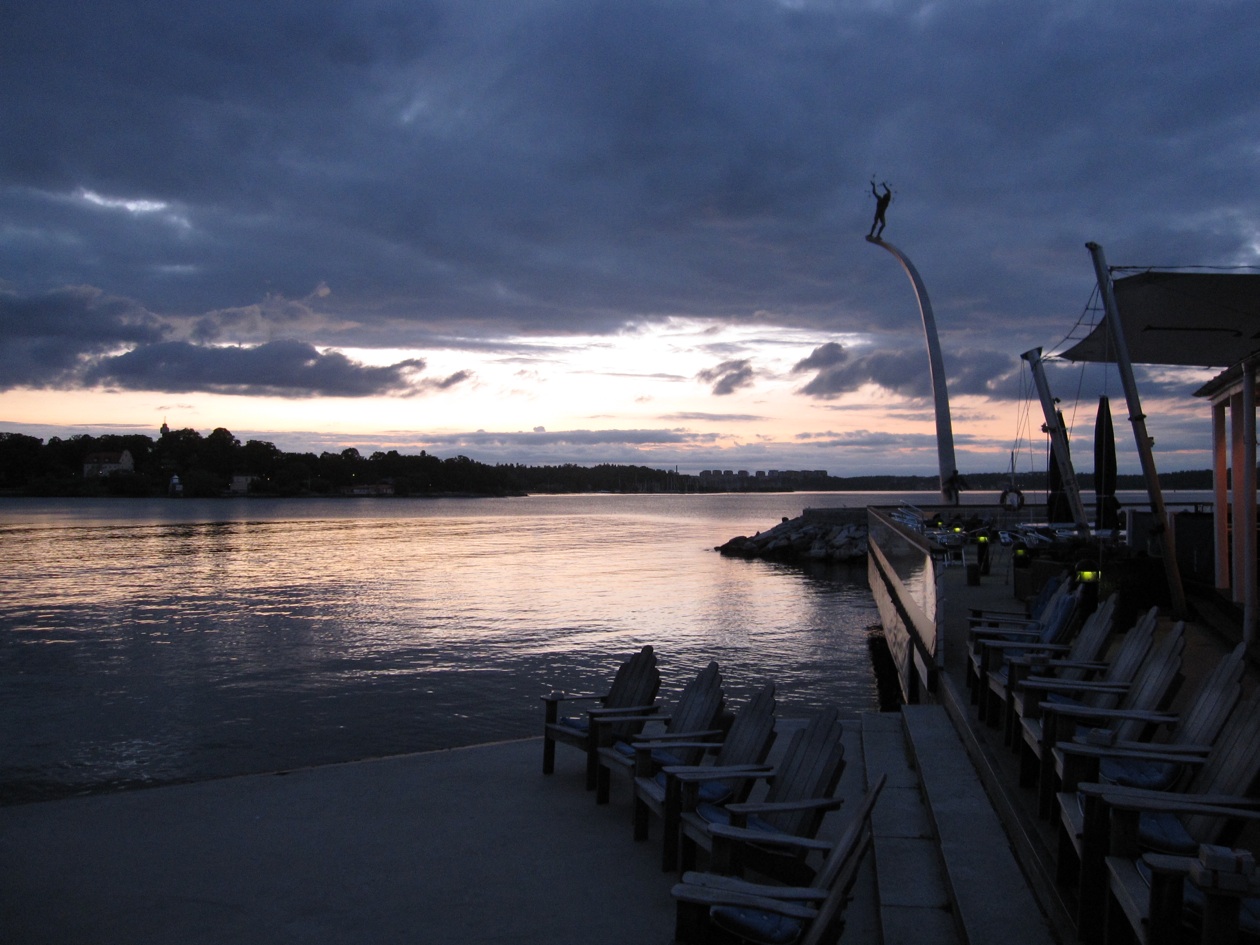 along
with a piece of steaming hot bread that I covered with Swedish butter,
always
whipped and mixed with either dill or parsley. For
our
main
course
we
shared
the
“mess,”
a
mixture
of
succulent
whole
shrimp
in
the
shell,
two pound lobsters split in half,
delicate
sweet pickled herring, and baby shrimp mixed with homemade mayonnaise
and
dill. The meal was as refreshing
as Sweden’s crisp cool air and light breezes, and around 11:30 pm when
our meal
ended, we walked back to the boat under the baby blue and silver sky
that
glistened off the still water and headed home for the
night.
along
with a piece of steaming hot bread that I covered with Swedish butter,
always
whipped and mixed with either dill or parsley. For
our
main
course
we
shared
the
“mess,”
a
mixture
of
succulent
whole
shrimp
in
the
shell,
two pound lobsters split in half,
delicate
sweet pickled herring, and baby shrimp mixed with homemade mayonnaise
and
dill. The meal was as refreshing
as Sweden’s crisp cool air and light breezes, and around 11:30 pm when
our meal
ended, we walked back to the boat under the baby blue and silver sky
that
glistened off the still water and headed home for the
night.The distillery is gorgeous with original cannons placed throughout the property and is surrounded by open fields and Swedish mansions that sit far off in the distance.
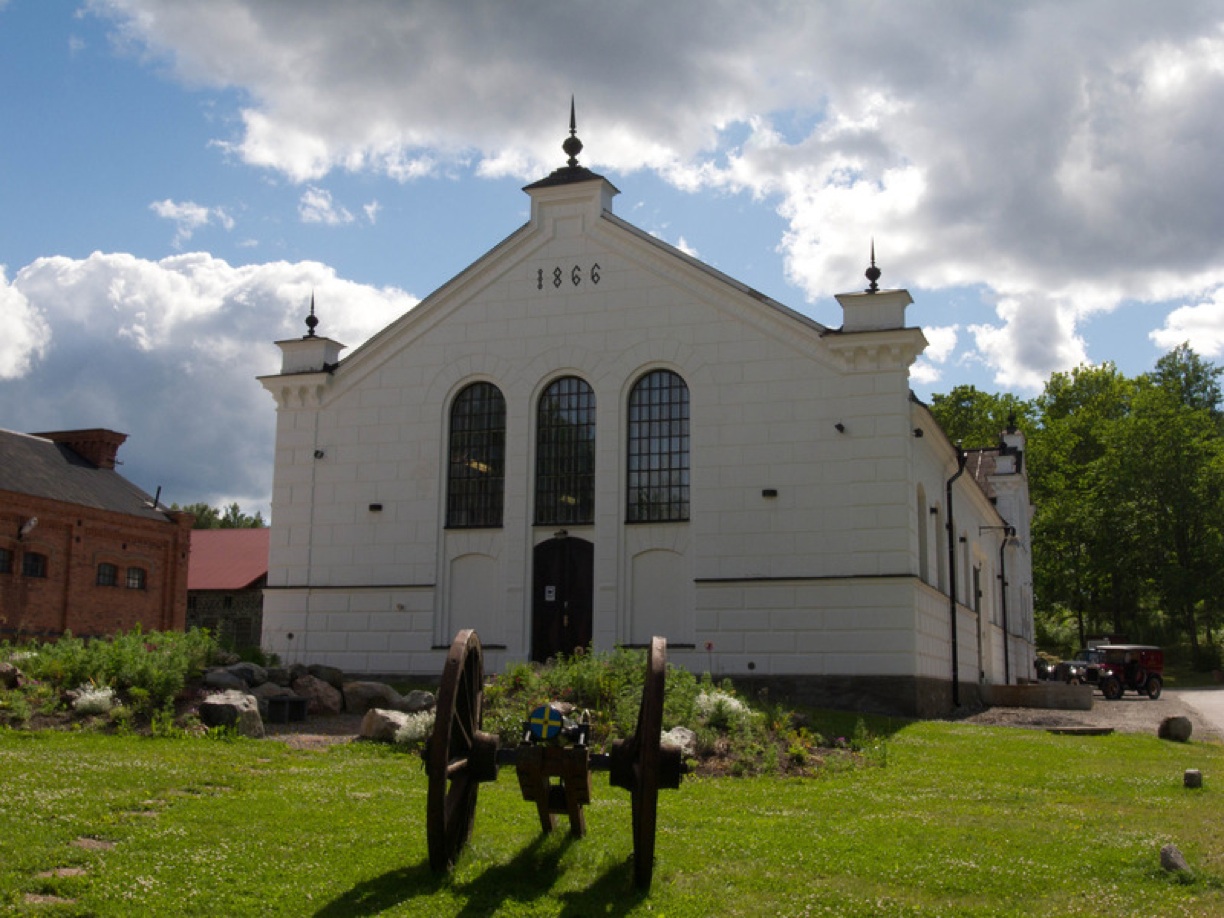
The distillery tour began as we put on white lab coats and entered the first of three sections that immediately reminded me of the aroma I encounter every time I walk into Arthur Avenue’s Madonia Brothers’ bakery, as the naturally grown wheat was being mashed at a high temperature in preparation for the fermentation process that would soon follow. Johansson explained that all the wheat used to create the vodka is nationally certified organic wheat and is part of the NOP, National Organic Program. The approved local farms do not use any pesticides to kill the local wildflower and do not use additives or unnatural fertilizers. The distillery itself only requires ten workers to operate it and can produce up to 10,000 liters of vodka per day. The distillery also has tremendous history: in 1580 the Akers Iron Foundry was started by King Karl XI to produce cannons for the Swedish military, while the distillery was used to produce vodka that would be given to the cannon factory workers as incentives to work harder and faster. The amount of daily production would reflect the numeric coin received at the work day’s end that would be exchanged for a specific amount of vodka.
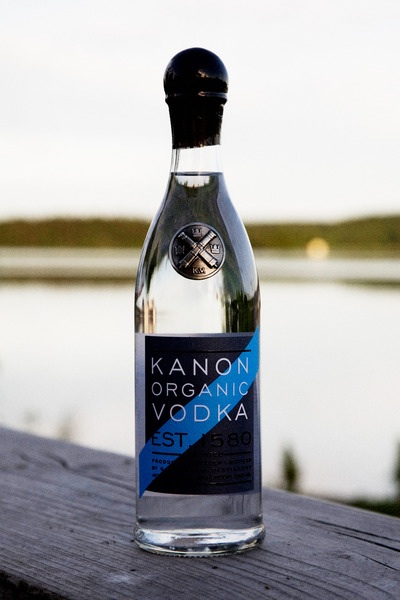 Just about two hundred years later the Kanon
distillery
became a royal distillery under King Gustav III, who banned the
production of
vodka by anyone who did not work on royal grounds. After the
enlightening tour
of the distillery, we headed to the Gripsholm Inn where Johansson not
only showcased
tremendous hospitality and a wealth of knowledge but impressed me with
his
ability to speak fluently multiple languages; he also play the guitar,
a true renaissance
man.
Just about two hundred years later the Kanon
distillery
became a royal distillery under King Gustav III, who banned the
production of
vodka by anyone who did not work on royal grounds. After the
enlightening tour
of the distillery, we headed to the Gripsholm Inn where Johansson not
only showcased
tremendous hospitality and a wealth of knowledge but impressed me with
his
ability to speak fluently multiple languages; he also play the guitar,
a true renaissance
man.The Gripsholm Inn (below), dating back to 1609, is the oldest Inn in all of Sweden. The inn is a very upscale bed and breakfast with beautiful antique décor and classic wooden floors and ceilings standard throughout the entire inn. The rooms are darling and seem right out of a Victorian trimmed dollhouse. The town itself looks exactly the way it did 500 years ago and most likely will remain so for the next half-millennium, with the exception of the new cars, which are few of to begin with. The locals are lovely and very content with their peaceful lives as they fish for fun and take long walks with their loved ones around the surrounding placid lakes. I will never forget waking up the first morning and taking a walk along the water’s edge to hear only the sounds of a light breeze and the quacking of a small flock of ducks teaching their young to swim.
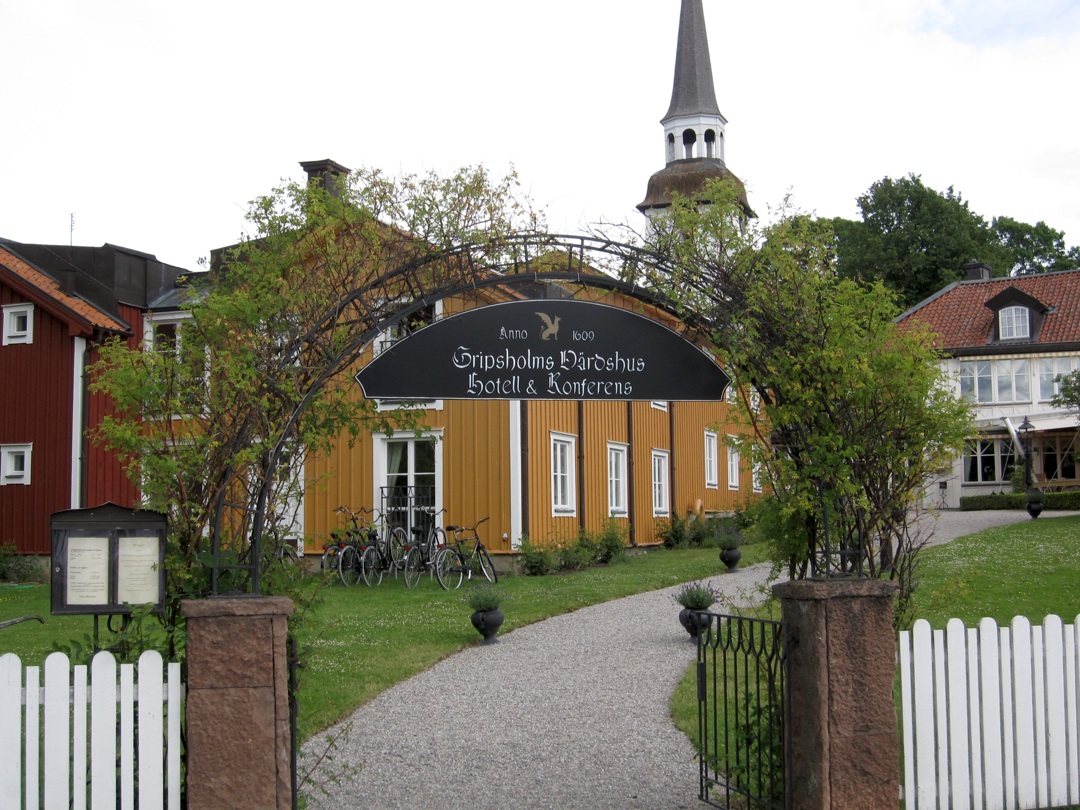
That evening we dined at the Inn, where I had a chance to try a wide array of vodka cocktail mixtures created by Stefanie Marco, Kanon’s professional mixologist, who is enthusiastic, well-educated, and best of all has a firm understanding of what makes a good cocktail. While I sat on the outside patio, I tried Stefanie’s cucumber mint aperitif. Throughout our five-course meal there was one drink that trumped all, the Kanon Smoking Full Body, made with strained blackberry puree, vodka, fresh lemon juice, and Veloce cordial, served in a cloche glass with freshly vaporized rosemary. The aroma from the rosemary was delightful and paired perfectly with the lamb tenderloin surrounded with rosemary jus.
The following day I headed back to Stockholm in search of one more terrific meal, so I headed to Vassa Eggen, located on the southwest corner of Stockholm’s Scandic Park. I dined outside at a terrace table where the street was bustling with cars, yet I did not hear a single car horn, quite a pleasant absence, since I've lived in New York my whole life. I began my meal with an order of that Swedish pickled herring that I simply could not get enough of. The herring was served warm, the fish very fresh, and the dish had just the right balance of sweet and salt.
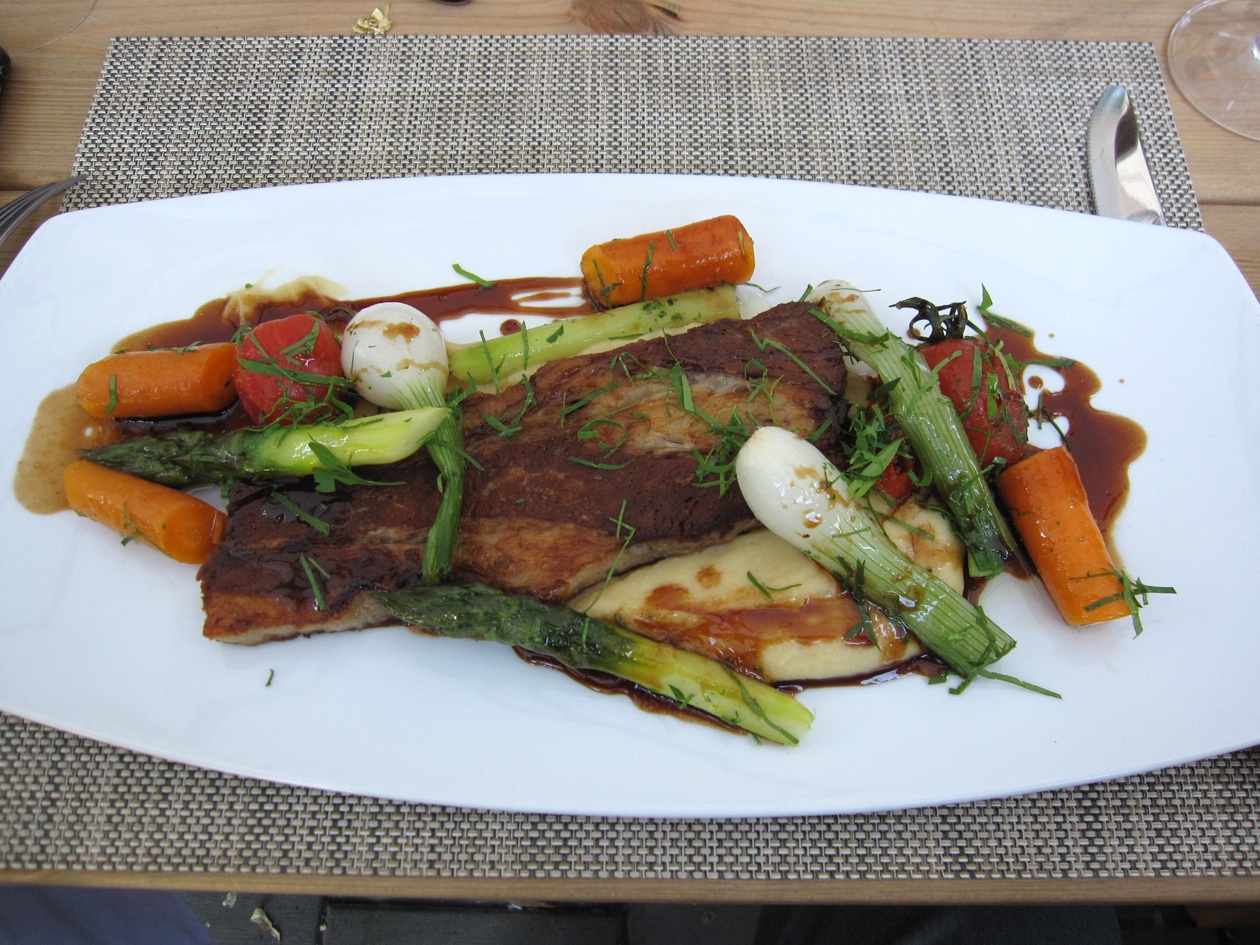 I ordered two
entrees only because I couldn’t resist, and of course they were both
heavy
dishes that required a long walk afterwards to help digest. The first was Vassa Eggen’s tender veal
brisket (left) served with an
amazing garlic puree. The
veal
had
plenty of
flavor, was soft
enough
to
cut with a
fork, and had just the right amount of fat, which melted with
each bite. I also had to try the black
blood pudding served with sautéed apples and thick slices of
bacon. The pudding itself was a bit
lackluster, but the flavor from the bacon was a nice accompaniment. After such a hearty lunch, I took a walk
through Stockholm’s Sofo, a section
of the city that mirrors NYC’s Soho. Sofo
is a shopper’s paradise with great stores, fun little
cafés, and a
sea of young beautiful Swedes enjoying their vibrant city.
I ordered two
entrees only because I couldn’t resist, and of course they were both
heavy
dishes that required a long walk afterwards to help digest. The first was Vassa Eggen’s tender veal
brisket (left) served with an
amazing garlic puree. The
veal
had
plenty of
flavor, was soft
enough
to
cut with a
fork, and had just the right amount of fat, which melted with
each bite. I also had to try the black
blood pudding served with sautéed apples and thick slices of
bacon. The pudding itself was a bit
lackluster, but the flavor from the bacon was a nice accompaniment. After such a hearty lunch, I took a walk
through Stockholm’s Sofo, a section
of the city that mirrors NYC’s Soho. Sofo
is a shopper’s paradise with great stores, fun little
cafés, and a
sea of young beautiful Swedes enjoying their vibrant city.The last night of my trip, I attended Kanon vodka’s mid-summer night launch party at Stockholm’s hottest outdoor lounge, F12. The party was celebrating Kanon’s new label that was designed by Thomas Mastorakos. The party was a blast and everywhere I turned, I was looking at a tall, 6’0 foot, blond model with gorgeous blue eyes and a body that even swimmers would envy. Sweden is beautiful in every aspect, and Stockholm is an incredible city that combines the essence of Venice’s waterways, NY’s shopping scene, folkloric architecture, and Scandinavian beauty all in one.
To contact Christopher Mariani send an email to christopher@johnmariani.com
~~~~~~~~~~~~~~~~~~~~~~~~~~~~~~~~~~~~~~~~~~~~~~~~~~~

JAH, BUT DER CHEESY BEER
BREATH
VILL KILL YOUR PROSPECTS ANYVAY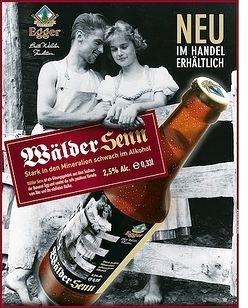
Austrian brewers of Walder Senn beer have invented a new beer laced with cheese that promises a "positive and healthy" amorous response after drinking it. Chief brewer Heinrich Hommel explained how the ingredients and lower alcohol won't detract from lovemaking: "Our aim was to get rid of the cheesy taste of the whey while keeping its nutrients and positive ingredients - the lactose and the vitamins which help keep men healthy," he said.
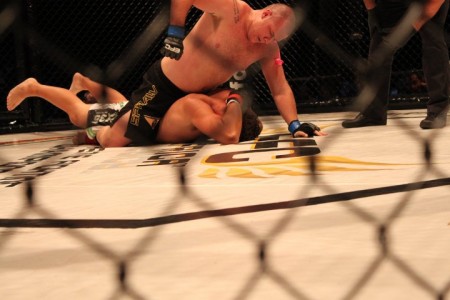
WAIT TILL YOU SEE
HIM KNEAD BREAD!
"It’s certainly possible that Andre Natera,
the new chef at The Fairmount's Pyramid Restaurant & Bar, has his
own tales
of drinking Old Crow with hookers and losing his Mustang in an
arm-wrestling
match. I should have been tipped off by my excited
server's lengthy description of the salad, which involved 'the chef
hitting it
with oil' and 'the chef hitting it with mint.' In this server's
telling, the
chef pummeled every dish."--Hanna
Raskin,
"The Pyramid Restaurant & Bar," Dallas Observer (July 2010)
QUICK BYTES
✉ Guidelines for submissions: QUICK BYTES publishes only events, special dinners, etc, open to the public, not restaurant openings or personnel changes. When submitting please send the most pertinent info, incl. tel # and site, in one short paragraph as simple e-mail text, WITH DATE LISTED FIRST, as below. Thanks. John Mariani
*
From
now
thru
Sept.
30
at
Nana at the
Hilton Anatole in Dallas,
TX, Executive Chef
Anthony Bombaci is extending his "Summer Savings Menu,"
a three-course dinner for $45 pp. On Sept. 3 Friday
Night Flights
returns featuring a trio of rustic Italian small plates paired with
three
Italian wines. The flight costs $20 pp. Call 214-761-7470. www.nanarestaurant.com.
* On Aug.
14 in New Orleans, the Southern Food and Beverage Museum will
host Jay Henrickson as he discusses the history of Herbsaint, part of
their month long series "Absinthe Minded," with lectures every Saturday
in August . $10 pp. On Aug. 21 journalist Todd
Price discusses the cultural influence of absinthe
and its presence in art and literature. $10 pp. Visit http://www.southernfood.org
or
call
504-569-0405.
* From Aug 18-29
in NYC, the Tour de France Restaurant group will
celebrate
the
tomato
with
their
third annual tomato festival. The nine Tour de France
eateries offer their own
regional interpretation of tomato favorites. Visit
www.TourDeFranceNYC.com.
* On Aug. 19 in New Orleans, Cafe Adelaide will host its, "We Live to Eat," Dinner. Bar Chef, Lu Brow will pair a cocktails with Chef Chris Lusk's cuisine; Neil Gernon and Monica Bourgeois of Vending Machine Wines will be on-hand to taste and discuss their new wines from Napa Valley. $55 pp. www.cafe Adelaide.com or call 504-595-3305.
*
* On
Aug. 19 Café Adelaide in New Orleans, LA, will host a “We Live To
Eat” wine
& cocktail dinner. Bar Chef Lu Brow and winemakers Neil Gernon
& Monica
Bourgeois of Vending Machine Winery will lead guests through the
cocktails
& wines paired with a 4-course dinner by Executive Chef Chris Lusk.
$55 pp.
Call 504-595-3305. http://www.cafeadelaide.com.
* On Aug. 20
in Arlington Hts., IL, Le
Titi De Paris will highlight the wines of Russian River Valley
with a
6-course menu from Chef/Owner Michael Maddox. $85 pp. Call
847-506-0222.
* On Aug. 23
in Santa Monica, CA, Mélisse
Restaurant hosts Chef David Kinch of Manresa as part of their
Michelin Starred
Guest Chef Series. $150 pp. $20 from each meal will benefit
Special
Olympics. Visit www.melisse.com or call
310-395-0881.
* On Aug. 25 in New York, NY, El Porron presents a tapas festival special in honor of the annual Tomato Fight in Spain taking place that same day. Designed for two, each person will receive a glass of wine of their choice plus a hearty selection of 6 tapas will be served for the two to share. $80 for 2 ppl. Call 212-207-8349.
*On Aug. 26 Commander’s Palace in New Orleans, LA, will host a “We Live To Eat” wine dinner. Commander’s Palace Wine Guy Dan Davis and Lynn Fritz of Lynmar Estate will lead guests thru a 3-course menu by Executive Chef Tory McPhail. $65 pp. 504-899-8221. www.commanderspalace.com.
* On Aug. 31 in Larkspur, CA, Left Bank Brasserie hosts “Goat Night: A Head to Tail Event” at which a variety of a cuts of goat's meat will be served. Call 415-927-3331; www.leftbank.com.
*
On
Aug.
28
in
Healdsburg, CA, Simi Winerywill celebrate
the newest release of the
2007 Landslide Vineyard Cabernet Sauvignon
with a party to taste, sip and
dance to New Orleans Jazz among the towering
redwoods
on
the
Landslide
Terrace.
Call
707-473-3236. Wine Club Members $10, General Public
$20.
http://www.simiwinery.com.
* On Aug 28
near Prosser, WA, the Walter Clore
Wine & Culinary
Center hosts the annual Legends of
Washington Wine Hall of Fame Gala. Bill Powers and David Lake
are
honored. Celebrity Chef, Dave Martin, caters, and wine has been
specially
crafted by Milbrandt’s Gordon Hill. Tix and sponsorships
available at http://www.theclorecenter.org
or
by
calling
509-786-1000.
*
From Sept. 4 – 5 in West Sussex,
England, more than 150 varieties of tomato
will be on display at the Totally Tomato
Show as competitors compete for the spot of tastiest tomato and
compete in
the tomato growing competition. Growing tips, cooking demos and
tastings. £7.50 for adults, £3.50 for children,
£7 for seniors over 60
and £18.50 for families. Call +44-0124-381-8210.
Everett Potter's Travel Report:

~~~~~~~~~~~~~~~~~~~~~~~~~~~~~~~~~~~~~~~~~~~~~~~~~~~~~~~~~~~~~~~~~~~~~~~~~~
Eating Las Vegas is the new on-line site for Virtual Gourmet contributor John A. Curtas., who since 1995 has been commenting on the Las Vegas food scene and reviewing restaurants for Nevada Public Radio. He is also the restaurant critic for KLAS TV, Channel 8 in Las Vegas, and his past reviews can be accessed at KNPR.org. Click on the logo below to go directly to his site.
~~~~~~~~~~~~~~~~~~~~~~~~~~~~~~~~~~~~~~~~~~~~~~~~~~~~~~~~~~~~~~~~~~~~~~~~~~~
Tennis Resorts Online: A Critical Guide to the World's Best Tennis Resorts and Tennis Camps, published by ROGER COX, who has spent more than two decades writing about tennis travel, including a 17-year stretch for Tennis magazine. He has also written for Arthur Frommer's Budget Travel, New York Magazine, Travel & Leisure, Esquire, Money, USTA Magazine, Men's Journal, and The Robb Report. He has authored two books-The World's Best Tennis Vacations (Stephen Greene Press/Viking Penguin, 1990) and The Best Places to Stay in the Rockies (Houghton Mifflin, 1992 & 1994), and the Melbourne (Australia) chapter to the Wall Street Journal Business Guide to Cities of the Pacific Rim (Fodor's Travel Guides, 1991).

nickonwine: An engaging, interactive wine column by Nick Passmore, Artisanal Editor, Four Seasons Magazine; Wine Columnist, BusinessWeek.com; nick@nickonwine.com; www.nickonwine.com.

MARIANI'S VIRTUAL GOURMET NEWSLETTER is published weekly. Editor/Publisher: John Mariani. Contributing Writers: Christopher Mariani, Robert Mariani, John A. Curtas, Edward Brivio, Mort Hochstein, Suzanne Wright, and Brian Freedman. Contributing Photographers: Galina Stepanoff-Dargery, Bobby Pirillo. Technical Advisor: Gerry McLoughlin.
Any of John Mariani's books below may be ordered from amazon.com by clicking on the cover image.
 My
newest book, written with my brother Robert Mariani, is a memoir of our
years growing up in the My
newest book, written with my brother Robert Mariani, is a memoir of our
years growing up in the For those of you who don't think of the Robert and I think you'll enjoy this very personal look at our --John Mariani |
 |
 |
 |
 |
 |
 |
© copyright John Mariani 2010
